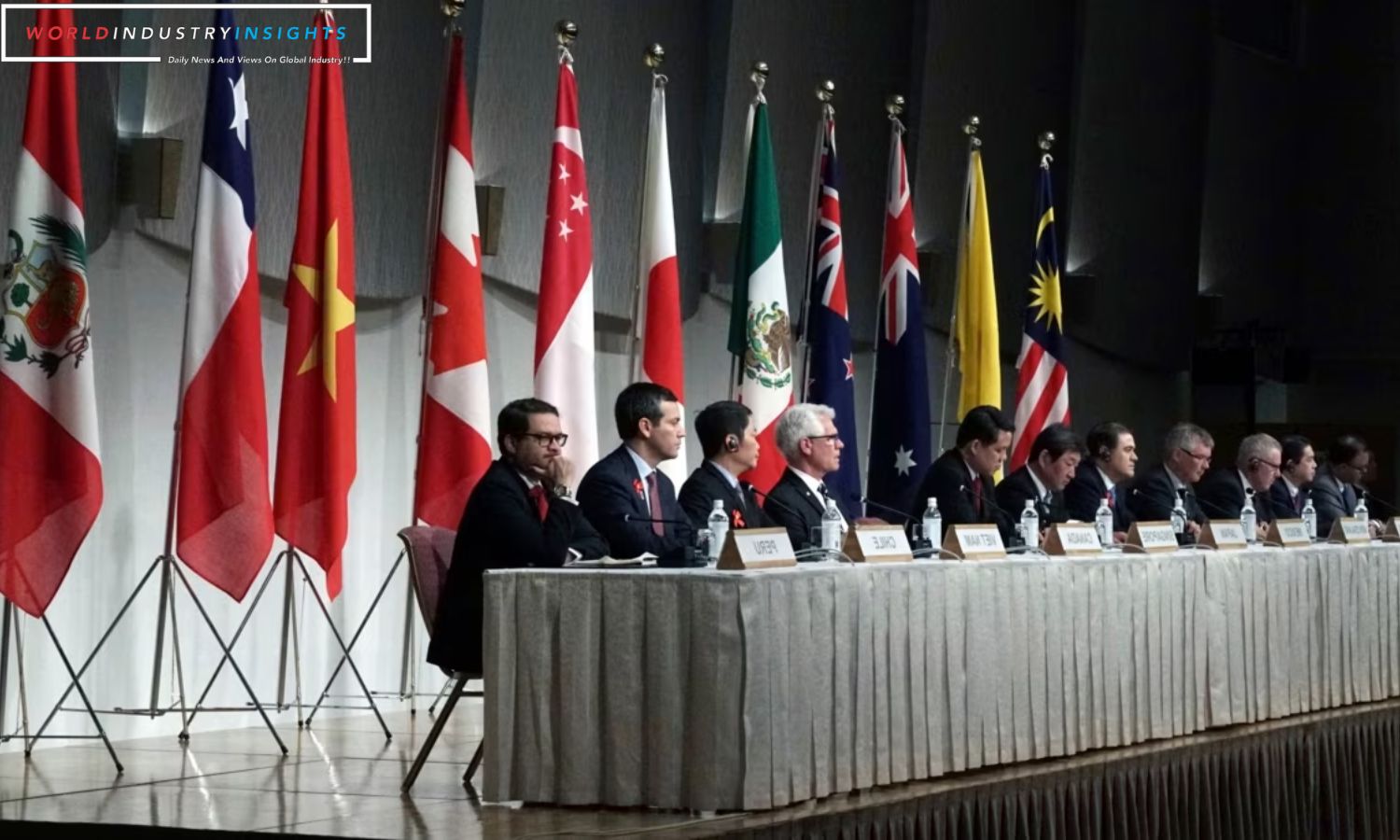CPTPP Ministers Summit: In the vibrant cityscape of San Francisco, trade ministers from the 12-nation Comprehensive and Progressive Agreement for Trans-Pacific Partnership (CPTPP) recently convened, signaling a collective aspiration for an expanded coalition. As the Indo-Pacific Economic Framework (IPEF) negotiations faced obstacles, these ministers reiterated their commitment to embracing new members aligned with the pact’s exacting standards.
This development coincided with the Biden administration’s ambition to showcase the IPEF initiative at the Asia Pacific Economic Cooperation (APEC) summita strategic move to assert economic influence in the Asian theater amid China’s rising dominance.
A notable participant in the CPTPP meeting was the United Kingdom, the latest entrant to the trade bloc after formally joining in July. In a joint statement, the ministers underscored the bloc’s openness to accession requests from economies capable of meeting stringent standards and consistently adhering to trade commitments.
Also Read: China Surprising Presence at UK AI Safety Summit Sparks Intrigue
However, the statement maintained a conspicuous silence on China’s bid to join the bloc, along with applications from Taiwan, Costa Rica, and Ecuador. The ministers emphasized that decisions regarding new members hinge on consensus, with ongoing evaluations of aspirant economies’ ability to meet the high standards set by the agreement.
Crucially, the statement clarified that information gathered thus far does not predetermine any decisions or actions to be taken by CPTPP members. It highlighted the importance of applying lessons learned from the UK accession process, positioning the bloc for measured expansion.
The current CPTPP membership comprises Australia, Brunei, Canada, Chile, Japan, Malaysia, Mexico, New Zealand, Peru, Singapore, the United Kingdom, and Vietnam. As these nations navigate the evolving trade landscape, the CPTPP’s resilience and openness to growth stand out against the backdrop of the stalled IPEF negotiations.
In the dynamic world of global trade, the CPTPP ministers’ meeting in San Francisco becomes a focal point, highlighting not just the bloc’s present strength but its strategic vision for the futurea vision that may shape the economic dynamics of the Asia-Pacific region.
Our Reader’s Queries
Who are the members of CPTPP 2023?
The CPTPP has expanded to include 12 economies, namely Australia, Brunei Darussalam, Canada, Chile, Japan, Malaysia, Mexico, New Zealand, Peru, Singapore, United Kingdom, and Viet Nam. This has resulted in a significant increase in the collective global share of GDP for CPTPP members, which now stands at 14.6%.
Is the US a member of the CPTPP?
The CPTPP is a FTA created by 11 countries that were part of the TPP after the U.S. withdrew its signature in 2017.
Who are the members of CPTPP?
The CPTPP is a FTA that brings together 11 countries including Australia, Brunei Darussalam, Canada, Chile, Japan, Malaysia, Mexico, Peru, New Zealand, Singapore and Vietnam. This agreement aims to promote free trade and economic growth among these nations. By eliminating tariffs and other trade barriers, the CPTPP creates a level playing field for businesses and encourages cross-border investment. With its wide-ranging scope and diverse membership, the CPTPP is poised to have a significant impact on global trade and commerce.
Who is the chair of the CPTPP?
In 2023, New Zealand will be hosting the Comprehensive and Progressive Agreement for Trans-Pacific Partnership (CPTPP) meeting as it holds the Chair position. This is a significant event for the country and the partnership as a whole. The CPTPP is a trade agreement between 11 countries that aims to promote economic growth and development in the Asia-Pacific region. As the host, New Zealand will have the opportunity to showcase its commitment to the partnership and strengthen its relationships with other member countries.


